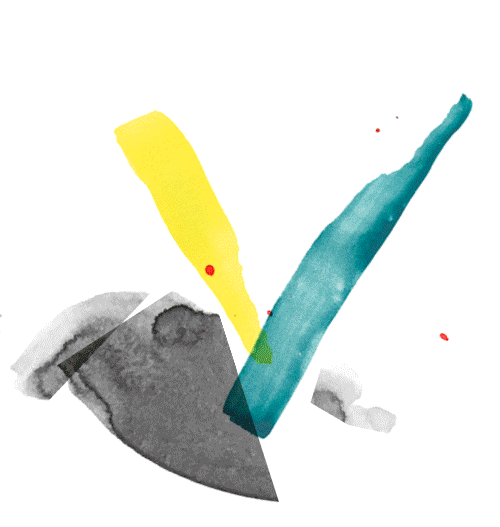

Sign up for our newsletters. You can change the settings or unsubscribe at any time.
Thank you for your subscription. We have sent you an e-mail with a confirmation link.


exp. 1
exp. 2
exp. 3

Katarina Zdjelar
Venue: Gropius Bau
Katarina Zdjelar
Born 1979 in Belgrade, SR – lives and works in Rotterdam, NL
Working in diverse media including moving image and sound, performance, and publications, Katarina Zdjelar explores the production and enactment of cultural, gender, and political identities across time and space. In a new iteration of her installation Not A Pillar Not A Pile (2020), Zdjelar traces the ideological affinities between the iconic graphic artist Käthe Kollwitz (1867–1945) and the Expressionist choreographer Dore Hoyer (1911–67), two proto-feminists committed to pacifism and anti-fascism. The work departs from the first and only production of Tanz für Käthe Kollwitz [Dance for Käthe Kollwitz, 1946] staged by Hoyer in the modest dance studio she founded in war-ravaged Dresden. More than a dancer, Hoyer defined herself as a “medium for the present,” and she based this inaugural performance’s choreography on several works by Kollwitz, admiring the artist’s visceral depictions of proletariat women and their struggle.
Working with a group of dancers and activists, Zdjelar revives the artistic and political legacies of Hoyer and Kollwitz in a four-channel video installation showing bodily encounters based on gestures that appear in Kollwitz’s drawings and prints. Zdjelar reiterates, reperforms, and reinscribes these poses as contemporary possibilities of protest and solidarity for a politically fragile present. The set of the videos and the costumes worn by the dancers feature a pattern created by female workers at the PAUSA textile factory, originally owned by a Jewish family active in the anti-fascist resistance. Not A Pillar Not A Pile additionally presents an archival installation with photographs of Hoyer’s performance. A series of black wooden floorboards with abstract cutouts that resemble woodcuts by Kollwitz and glass sculptures add a three-dimensional component to the work.
Michèle Faguet
Museo de la Solidaridad Salvador Allende (MSSA) in Berlin
A conversation between María Berríos and Melanie Roumiguière
Conversation
Undocumented Rumours and Disappearing Acts from Chile
María Berríos
Essay
Género y colonialidad en busca de claves de lectura y de un vocabulario estratégico descolonial
Rita Segato
Essay
Fragments of the Artist’s Diary, Berlin 11.2019–1.2020
Virginia de Medeiros
Diary
III: La familia son quiénes se alegran con nuestros actos diarios. Detrás de las curadoras de la XI
María Berríos, Agustín Pérez Rubio
Conversation
Hatred Among Us
Lisette Lagnado
Essay
By using this website you agree to the use of cookies in accordance with our data privacy policy.

Katarina Zdjelar
Venue: Gropius Bau
Katarina Zdjelar
Born 1979 in Belgrade, SR – lives and works in Rotterdam, NL
Working in diverse media including moving image and sound, performance, and publications, Katarina Zdjelar explores the production and enactment of cultural, gender, and political identities across time and space. In a new iteration of her installation Not A Pillar Not A Pile (2020), Zdjelar traces the ideological affinities between the iconic graphic artist Käthe Kollwitz (1867–1945) and the Expressionist choreographer Dore Hoyer (1911–67), two proto-feminists committed to pacifism and anti-fascism. The work departs from the first and only production of Tanz für Käthe Kollwitz [Dance for Käthe Kollwitz, 1946] staged by Hoyer in the modest dance studio she founded in war-ravaged Dresden. More than a dancer, Hoyer defined herself as a “medium for the present,” and she based this inaugural performance’s choreography on several works by Kollwitz, admiring the artist’s visceral depictions of proletariat women and their struggle.
Working with a group of dancers and activists, Zdjelar revives the artistic and political legacies of Hoyer and Kollwitz in a four-channel video installation showing bodily encounters based on gestures that appear in Kollwitz’s drawings and prints. Zdjelar reiterates, reperforms, and reinscribes these poses as contemporary possibilities of protest and solidarity for a politically fragile present. The set of the videos and the costumes worn by the dancers feature a pattern created by female workers at the PAUSA textile factory, originally owned by a Jewish family active in the anti-fascist resistance. Not A Pillar Not A Pile additionally presents an archival installation with photographs of Hoyer’s performance. A series of black wooden floorboards with abstract cutouts that resemble woodcuts by Kollwitz and glass sculptures add a three-dimensional component to the work.
Michèle Faguet
Museo de la Solidaridad Salvador Allende (MSSA) in Berlin
A conversation between María Berríos and Melanie Roumiguière
Conversation
Memorial to the Sinti and Roma Victims of National Socialism
Dani Karavan
Memorial
Feminist Health Care Research Group
Web archive
Hatred Among Us
Lisette Lagnado
Essay
BLM KOREA ARTS
#BlackLivesMatter #BLMKoreaArts
Young-jun Tak
Statement
Maternidades subversivas
María Llopis
Monograph
By using this website you agree to the use of cookies in accordance with our data privacy policy.

Katarina Zdjelar
Venue: Gropius Bau
Katarina Zdjelar
Born 1979 in Belgrade, SR – lives and works in Rotterdam, NL
Working in diverse media including moving image and sound, performance, and publications, Katarina Zdjelar explores the production and enactment of cultural, gender, and political identities across time and space. In a new iteration of her installation Not A Pillar Not A Pile (2020), Zdjelar traces the ideological affinities between the iconic graphic artist Käthe Kollwitz (1867–1945) and the Expressionist choreographer Dore Hoyer (1911–67), two proto-feminists committed to pacifism and anti-fascism. The work departs from the first and only production of Tanz für Käthe Kollwitz [Dance for Käthe Kollwitz, 1946] staged by Hoyer in the modest dance studio she founded in war-ravaged Dresden. More than a dancer, Hoyer defined herself as a “medium for the present,” and she based this inaugural performance’s choreography on several works by Kollwitz, admiring the artist’s visceral depictions of proletariat women and their struggle.
Working with a group of dancers and activists, Zdjelar revives the artistic and political legacies of Hoyer and Kollwitz in a four-channel video installation showing bodily encounters based on gestures that appear in Kollwitz’s drawings and prints. Zdjelar reiterates, reperforms, and reinscribes these poses as contemporary possibilities of protest and solidarity for a politically fragile present. The set of the videos and the costumes worn by the dancers feature a pattern created by female workers at the PAUSA textile factory, originally owned by a Jewish family active in the anti-fascist resistance. Not A Pillar Not A Pile additionally presents an archival installation with photographs of Hoyer’s performance. A series of black wooden floorboards with abstract cutouts that resemble woodcuts by Kollwitz and glass sculptures add a three-dimensional component to the work.
Michèle Faguet
Being in Crisis together – Einander in Krisen begegnen
Feminist Health Care Research Group (Inga Zimprich/Julia Bonn)
Online workshop
Freiheit für Chile!
Anonymous
Photo album
New Look
Flávio de Carvalho
Performance
Grupo Experimental de Cine en acción
Gabriel Peluffo
Drawing
#fight4rojava
Graffiti
Museo de la Solidaridad Salvador Allende (MSSA) in Berlin
A conversation between María Berríos and Melanie Roumiguière
Conversation
By using this website you agree to the use of cookies in accordance with our data privacy policy.

Katarina Zdjelar
Venue: Gropius Bau
Katarina Zdjelar
Born 1979 in Belgrade, SR – lives and works in Rotterdam, NL
Working in diverse media including moving image and sound, performance, and publications, Katarina Zdjelar explores the production and enactment of cultural, gender, and political identities across time and space. In a new iteration of her installation Not A Pillar Not A Pile (2020), Zdjelar traces the ideological affinities between the iconic graphic artist Käthe Kollwitz (1867–1945) and the Expressionist choreographer Dore Hoyer (1911–67), two proto-feminists committed to pacifism and anti-fascism. The work departs from the first and only production of Tanz für Käthe Kollwitz [Dance for Käthe Kollwitz, 1946] staged by Hoyer in the modest dance studio she founded in war-ravaged Dresden. More than a dancer, Hoyer defined herself as a “medium for the present,” and she based this inaugural performance’s choreography on several works by Kollwitz, admiring the artist’s visceral depictions of proletariat women and their struggle.
Working with a group of dancers and activists, Zdjelar revives the artistic and political legacies of Hoyer and Kollwitz in a four-channel video installation showing bodily encounters based on gestures that appear in Kollwitz’s drawings and prints. Zdjelar reiterates, reperforms, and reinscribes these poses as contemporary possibilities of protest and solidarity for a politically fragile present. The set of the videos and the costumes worn by the dancers feature a pattern created by female workers at the PAUSA textile factory, originally owned by a Jewish family active in the anti-fascist resistance. Not A Pillar Not A Pile additionally presents an archival installation with photographs of Hoyer’s performance. A series of black wooden floorboards with abstract cutouts that resemble woodcuts by Kollwitz and glass sculptures add a three-dimensional component to the work.
Michèle Faguet
#fight4rojava
Graffiti
St Sara Kali George
Delaine Le Bas
Soundscape
Freiheit für Chile!
Anonymous
Photo album
III: La familia son quiénes se alegran con nuestros actos diarios. Detrás de las curadoras de la XI
María Berríos, Agustín Pérez Rubio
Conversation
Expresiones de la locura: el arte de los enfermos mentales
Hans Prinzhorn
Monograph
Hatred Among Us
Lisette Lagnado
Essay
By using this website you agree to the use of cookies in accordance with our data privacy policy.
By using this website you agree to the use of cookies in accordance with our data privacy policy.




